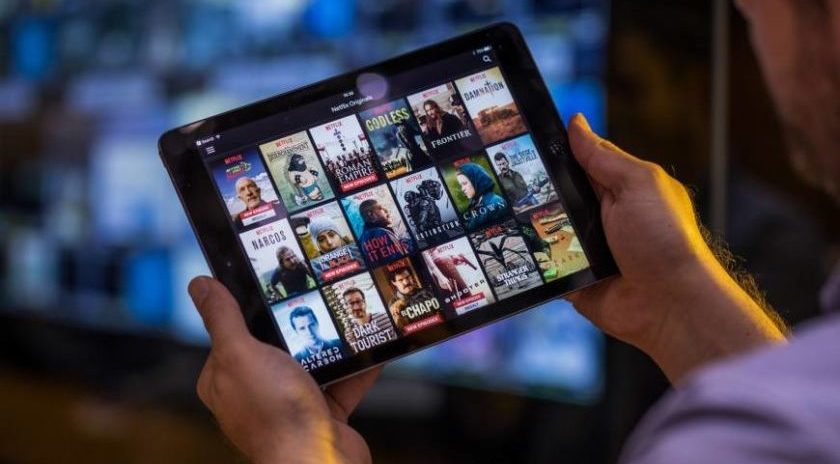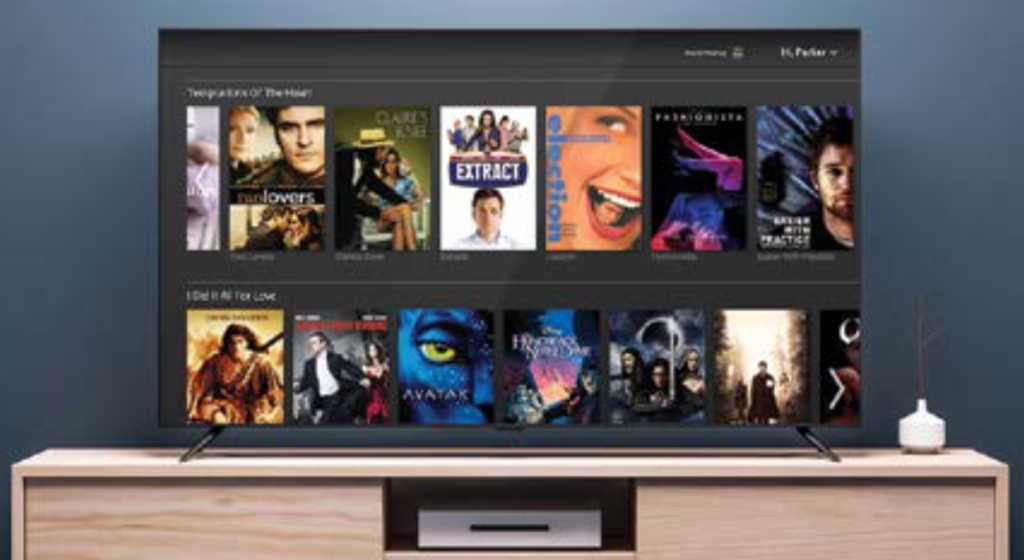Connections

M&E Journal: Beyond Genre: Exploring Content Discovery’s New Frontier
Story Highlights
As the world shelters at home to stall the spread of COVID-19, families, co-habitants and individuals alike are discovering newfound time to occupy.
An uptick in TV consumption has resulted as viewers broadly seek new TV shows and movies to stay entertained. Even before the novel coronavirus pandemic broke out, average time spent by U.S. adults watching video on live and time-shifted TV, TV-connected devices, computers, smartphones and tablets amounted to a whopping 5 hours, 43 minutes per day according to the April 2020 Nielsen Total Audience Report covering Q4 2019.
This was up a full 21 minutes over numbers in the February release of the report, speaking clearly to the value consumers place on watching video content, even outside of a major disruptive event keeping them at home.
In the face of COVID-19 driven lockdowns, a popular meme is making the rounds on social media. It facetiously states, “I finished Netflix today.”
This captures viewers’ voracious appetites for content and the drive — sometimes bordering on obsessive — to consume the smorgasbord with deliberation. Just what does this full feast of content look like today? Ac-cording to Gracenote data, there were approximately 646,000 unique program titles avail-able across linear and streaming TV services in 2019. This represents a 10 percent increase over the previous year.
Incumbent streaming services and new entrants to the marketplace with major backing have been driving demand for compelling TV series and movies to populate their catalogs, leading to these ballooning numbers. Amid the streaming wars, video providers are leveraging new original programming in addition to popular licensed content to the maximum degree in order to attract new subscribers and retain existing ones.
 More programs, narrow appeal
More programs, narrow appeal
Content itself is evolving as well. A limited number of mass appeal TV shows and movies created to entertain large swaths of viewers by way of appointment consumption has given way to a much broader range of program offerings targeted to increasingly narrow audience tastes. One consequence is that much programming produced today transcends basic genre categories such as crime drama or romantic comedy or reality TV.
To provide more compelling viewing and encourage binge consumption, creators are developing content that pushes traditional boundaries and challenges increasingly sophisticated audiences by blending genres more freely. Think thriller films with a heavy dose of comedic elements like Parasite.
Or television content built around complicated storylines and nuanced characters such as The Expanse or Mr. Robot.
These are the types of content that viewers are watching and talking about with others today. In this golden age of content, it’s safe to say that there is something available to suit every imaginable viewer taste and mood. But for providers, connecting the right view-er to the perfect piece of programming at the right moment is becoming increasingly difficult. An abundance of choice based on the sheer volume of what’s available leads to a paradox: too much choice can cause consumer indecision and even disengagement.
According to the Q1 2019 Nielsen Total Audience Report, the average time adults spent browsing available content when they didn’t know exactly what they wanted to watch was 7.4 minutes. If viewers didn’t find something worthwhile quickly, 21 per-cent tended to abandon the viewing session and engage in another activity.
With this in mind, forward-thinking video providers are strategizing on how to deliver outstanding user experience to complement the high quality of their content offerings. Improved discovery and recommendation algorithms, as well as advanced voice search and navigation capabilities, are key priorities.
 Appeal beyond genre
Appeal beyond genre
A new way of categorizing content going beyond using genre to cluster generally similar program offerings involves illuminating specific elements of that content. Editorially curated metadata describing TV shows and movies from various angles such as mood, theme, scenario and setting enables providers to understand foundational aspects of content that may resonate with individual viewers — and draw them to those offerings.
Smart taxonomy and editorially structured keyword sets describe content in granular terms, allowing for intuitive correlations between programs and movies with similar attributes going well beyond genre. Using this approach, a viewer interested in the theme of rivalries could be presented Ford v Ferrari alongside Crazy Rich Asians, two very different types of content but both sharing the primary thematic element of conflict between people. New visibility into the attributes of the characters whose performances inform the themes and drive the moods of TV shows and movies gives providers yet another opportunity to connect viewers to content they will enjoy.
Metadata descriptions of core character traits such as being a big dreamer or highly charismatic, and motivations like learning from failure or thriving under pres-sure, can push content discovery and recommendations to the next level. Finally, graphical images that represent different aspects of a single piece of con-tent give that TV show or movie the best opportunity to strike a chord with consumers. For example, the New York setting of Brooklyn Nine-Nine may be the aspect that attracts the interest of one viewer while for another, Andy Samberg in the starring role is the main draw.
The ability to present different images in a UI based on known viewer affinities provides video services new opportunities to maximize visual merchandising around content and improve view-through.In summary, consumers clearly allocate time in their days for video entertainment.
What’s not clear, despite what the popular meme says is, whether they have the inclination to eat their ways through entire content catalogs. By offering improved search, discovery and recommendation features powered by advanced metadata, connected IDs and rich imagery, providers can help viewers get right to the main course of the meal — the TV shows and movies that best fit their tastes, preferences and moods.
And by doing so, ensure they feel completely satiated by the experience.
* By Trent Wheeler, SVP, Product, Video, Gracenote
———————-
Click here to translate this article
Click here to download the complete .PDF version of this article
Click here to download the entire Spring/Summer 2020 M&E Journal









